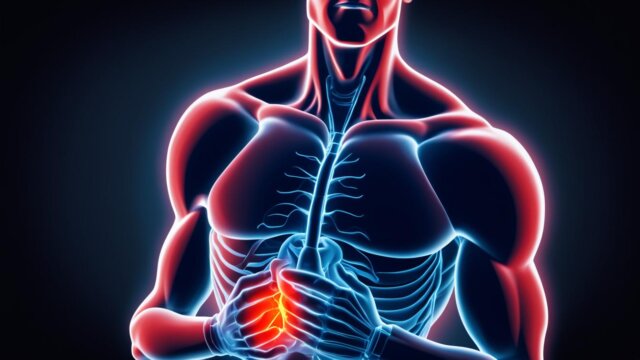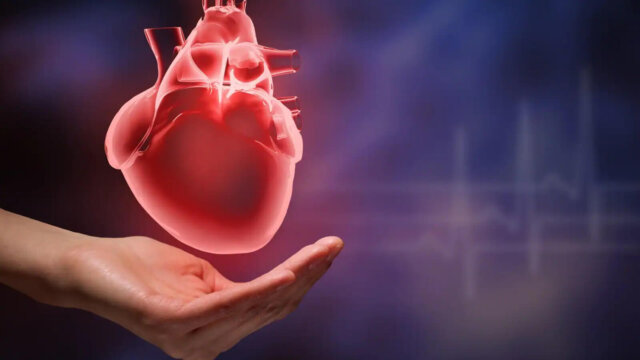FTC disclaimer: This post may contains affiliate links and we will be compensated if you click on a link and make a purchase.
Did you know Hodgkin lymphoma is a blood cancer found in about 11% of all lymphomas in the U.S.? This fact shows how crucial it is to know about this disease. It affects the lymphatic system, which is key to our immune health. Learning about Hodgkin disease helps you manage your or a loved one’s health better.
Key Takeaways
- Hodgkin lymphoma is a type of cancer that affects the lymphatic system.
- Diagnosis involves physical exams, imaging tests, and biopsy procedures.
- Classical Hodgkin lymphoma is often treated with a combination of chemotherapy and radiation therapy.
- Targeted therapy and immunotherapy are additional treatment options.
- Hodgkin lymphoma is most often diagnosed in young adults and older adults.
What is Hodgkin Disease?
Hodgkin disease is a type of lymphoma, a cancer that starts in the lymphatic system. It is known for large, abnormal cells called Reed-Sternberg cells. There are two main types: classical Hodgkin lymphoma and nodular lymphocyte-predominant Hodgkin lymphoma.
Defining Hodgkin Disease
Hodgkin disease is a cancer that starts in the lymphatic system. This system is part of the body’s immune system. It is different from other lymphomas because of the Reed-Sternberg cells.
Types of Hodgkin Disease
There are two main types of Hodgkin disease:
- Classical Hodgkin lymphoma – This is the most common type, making up about 95% of cases.
- Nodular lymphocyte-predominant Hodgkin lymphoma – This is a much rarer form.
Classical Hodgkin lymphoma has several subtypes. These include nodular sclerosis, mixed cellularity, lymphocyte-rich, and lymphocyte-depleted.
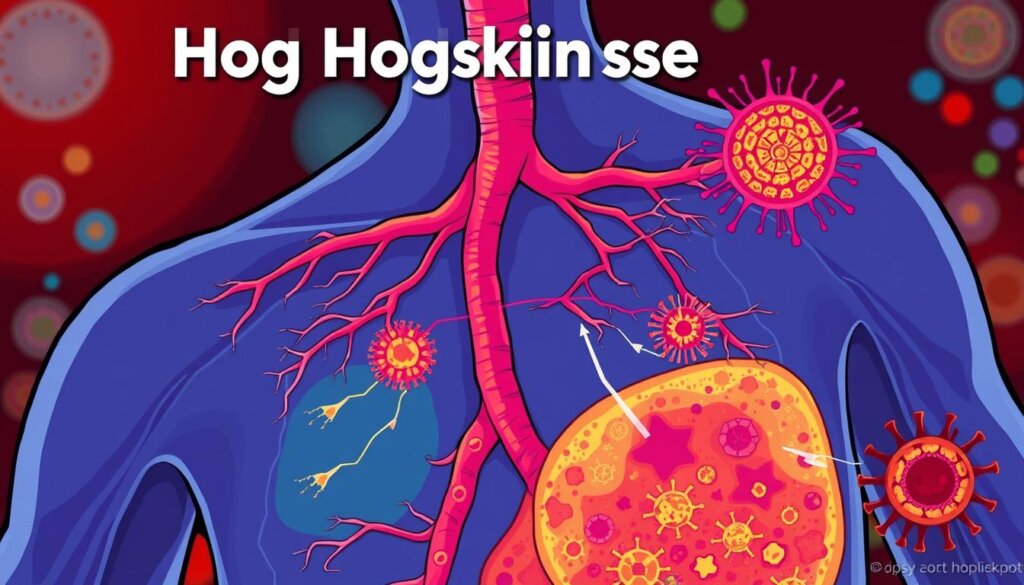
Prevalence of Hodgkin Disease
Hodgkin disease is rare cancer, hitting about 2.5 per 100,000 people yearly in the U.S. It mostly strikes young adults and older folks. It’s also more common in men than women.
In 2024, the U.S. will see about 8,570 new cases of Hodgkin lymphoma. This includes 4,630 in men and 3,940 in women. Sadly, 910 people will die from it, with 550 being men and 360 women. Hodgkin lymphoma is rare, making up just 0.4% of all new cancer cases.
The good news is that survival rates for Hodgkin lymphoma have jumped to 88.9% for those diagnosed from 2014 to 2020. New cases have dropped by 1.6% yearly since 2012. Death rates have fallen by 2.5% each year since 2013.
In short, Hodgkin disease is a rare cancer. But thanks to better treatments and early detection, survival rates are getting better. Now, the 5-year survival rate is almost 90%.
How Hodgkin Disease Affects the Body
Hodgkin disease is a type of lymphoma that mainly hits the lymphatic system. This system is key to our immune defense. It has lymph nodes, vessels, and organs that help fight off infections and diseases. In Hodgkin disease, bad white blood cells called Reed-Sternberg cells grow and spread. This makes lymph nodes swell.
Lymphatic System and Lymph Nodes
The lymphatic system is a network that moves lymph, a fluid with white blood cells, around the body. Lymph nodes are small, bean-shaped things along the lymphatic vessels. They filter out bacteria, viruses, and other bad stuff. In Hodgkin disease, Reed-Sternberg cells build up in lymph nodes. This makes them swell and get bigger.
Reed-Sternberg Cells
The main sign of Hodgkin disease is the Reed-Sternberg cells. These are abnormal B-cells that are bigger than normal lymphocytes and have unique features, like multiple nuclei. Reed-Sternberg cells make cytokines, which are signals that draw normal immune cells to the affected lymph nodes. This helps the disease grow and swell more.
“Hodgkin disease affects the lymphatic system, which is part of the body’s immune system. The lymphatic system includes lymph nodes, vessels, and other organs.”
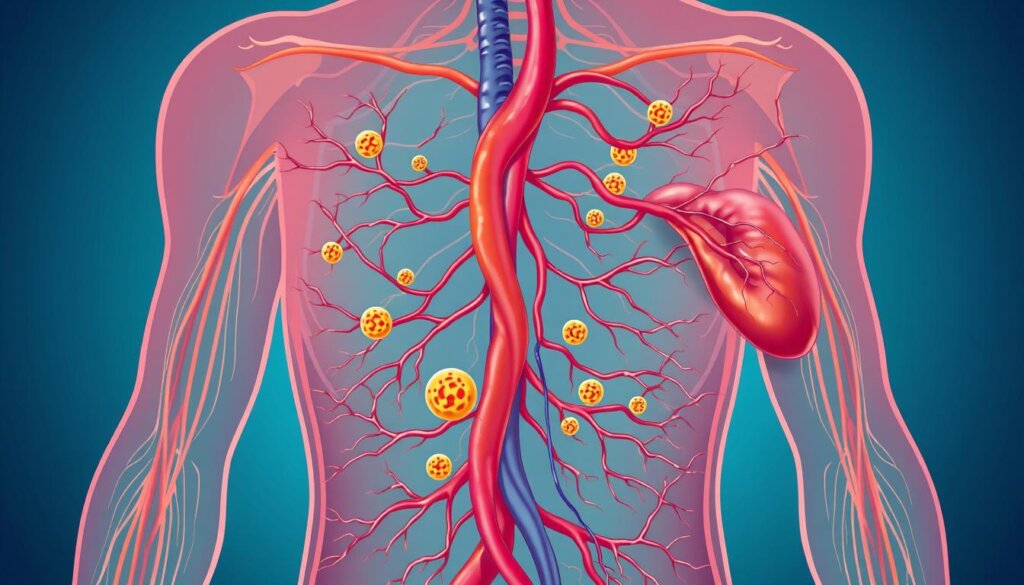
Classic Hodgkin Disease
Classic Hodgkin disease is the most common type of Hodgkin disease. It makes up over 90% of cases in developed countries. It has several subtypes, each with its own features and how often it happens.
Nodular Sclerosing Hodgkin Lymphoma
Nodular sclerosing Hodgkin lymphoma is the most common subtype. It makes up about 70% of classic Hodgkin disease cases. It often affects young adults, especially women. It is known for Reed-Sternberg cells in a fibrotic background.
Mixed Cellularity Hodgkin Lymphoma
Mixed cellularity Hodgkin lymphoma is found in 20-25% of classic Hodgkin disease cases. It is more common in children, older adults, and those with HIV. It has a mix of cell types, including many Reed-Sternberg cells.
Other subtypes include lymphocyte-rich and lymphocyte-depleted Hodgkin lymphoma. They make up about 5% and a small percentage of cases, respectively. Lymphocyte-depleted Hodgkin lymphoma is aggressive. It is seen in older people and those with HIV.
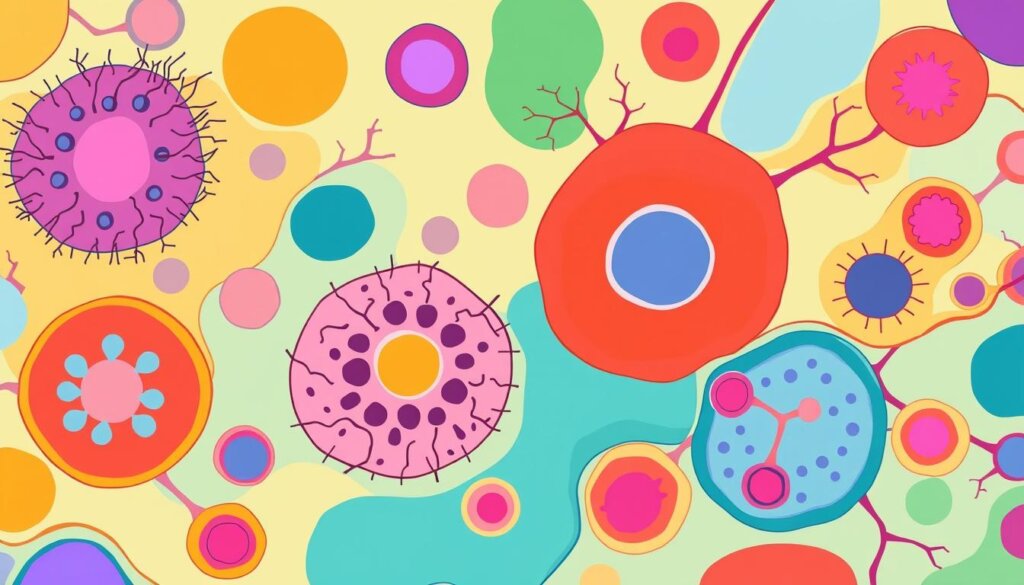
“The American Cancer Society provides comprehensive resources and guidelines for the diagnosis and treatment of Hodgkin lymphoma.”
Nodular Lymphocyte-Predominant Hodgkin Disease
Nodular lymphocyte-predominant Hodgkin disease (NLPHL) is a rare Hodgkin lymphoma type. It affects about 5% of Hodgkin disease cases. This disease is known for its slow growth and large, abnormal cells called “popcorn cells.” It’s more common in young adults, especially those in their 20s.
Genetic mutations in B lymphocytes are linked to NLPHL. The Epstein-Barr virus might cause DNA changes in B lymphocytes. This leads to Reed-Sternberg cells in NLPHL patients. A study found that 86% of 1,937 patients were under 65, and 67% were male.
Early-stage NLPHL is stage 1 or 2. It’s usually found in one area or nearby. Advanced-stage NLPHL is stage 3 or 4. It has spread to distant parts of the body. NLPHL grows slowly, making it an indolent lymphoma.
A study showed a 10-year survival rate of 94% for NLPHL patients. The 10-year progression-free survival rate was nearly 76%. Transformation to aggressive lymphoma happened in 5.1% to 8.2% of cases. Patients with limited-stage NLPHL treated with ABVD regimen had better outcomes.
NLPHL had a 5-year overall survival rate of 98% with low-intensity chemotherapy. The 5-year progression-free survival rate was 92%. Advanced-stage NLPHL had a 5-year overall survival rate of 95% and a 5-year progression-free survival rate of 86%. The R-CHOP regimen showed good results in advanced-stage nodular lymphocyte-predominant Hodgkin lymphoma with a 5-year overall survival rate of 88% and a 5-year progression-free survival rate of 71%.
Nodular lymphocyte-predominant Hodgkin disease is a rare and unique Hodgkin lymphoma type. It has favorable outcomes. Knowing its characteristics, causes, and treatments is key for better management and prognosis for patients.
Symptoms of Hodgkin Disease
Common Symptoms
Hodgkin disease often shows symptoms that can look like other common issues. The most common sign is swollen lymph nodes in the neck, armpits, or groin. These nodes might hurt after drinking alcohol, a sign of Hodgkin disease.
Other signs include fever, night sweats, and losing weight without trying. People with Hodgkin disease might also feel very tired, have dry and itchy skin, and get a red rash all over. In serious cases, they might cough, have trouble breathing, or feel pain in their chest.
It’s key to know that swollen lymph nodes are common and don’t always mean Hodgkin disease. But, if lymph nodes stay big or grow, see a doctor.
Symptom | Description |
|---|---|
Swollen Lymph Nodes | Painless swelling of lymph nodes in the neck, armpits, or groin. Larger or continuously growing lymph nodes should be evaluated. |
Fever and Night Sweats | Fever or chills at night or during the day, often accompanied by night sweats. |
Weight Loss | Unexplained weight loss, often a significant amount. |
Fatigue and Lack of Energy | Feeling constantly tired and lacking energy. |
Skin Changes | Dry, itchy skin and a widespread, red rash. |
Chest Symptoms | Cough, shortness of breath, or chest discomfort due to a large lymph node mass. |
These symptoms can be scary, but they don’t only mean Hodgkin disease. It’s vital to see a doctor regularly for the right diagnosis and treatment. Hodgkin disease is one of the most treatable, and catching it early can greatly improve treatment chances.
Causes and Risk Factors
The exact cause of Hodgkin disease is still a mystery. It’s thought to be linked to genetic changes and viral infections. While it’s not very common, some things can make you more likely to get it.
Genetic Mutations
Genetic changes, especially in the immune system, might help cause Hodgkin disease. But most people with it don’t have a family history. This shows that genetics aren’t the main cause.
Viral Infections
Viral infections, like the Epstein-Barr virus (EBV), raise the risk of Hodgkin disease. How EBV helps cause Hodgkin disease isn’t clear. But it’s thought to mess with the immune system and help abnormal cells grow.
Family History
Having a family member with Hodgkin’s disease slightly increases your risk. But it’s rare. Siblings of young people with it face a higher risk, but it’s still low.
Other things that might raise your risk include age and a weak immune system. Hodgkin disease often hits young adults and older folks. People with HIV or on immunosuppressive meds are also at higher risk. Knowing these risk factors helps spot Hodgkin disease early. This leads to quicker diagnosis and better treatment.
Hodgkin Disease Diagnosis
Diagnosing Hodgkin disease often starts with a lymph node biopsy. This test takes a small piece of lymph node tissue. It looks for Reed-Sternberg cells under a microscope.
These cells are a key sign of Hodgkin disease. They help doctors tell it apart from other lymphomas.
Your doctor might also do other tests to figure out the stage of the disease. These imaging tests include a chest X-ray, CT scan, MRI, PET scan, or bone scan. Blood tests, like a complete blood count and ESR, also help understand your health and how the disease is growing.
Diagnostic Test | Purpose |
|---|---|
Lymph Node Biopsy | Examines lymph node tissue for Reed-Sternberg cells to confirm Hodgkin disease diagnosis |
Imaging Tests (Chest X-ray, CT scan, MRI, PET scan, Bone scan) | Determines the stage of the disease and helps guide treatment planning |
Blood Tests (Complete Blood Count, ESR) | Provides information about overall health and disease progression |
The staging process helps your healthcare team know how far the disease has spread. This helps them plan the best treatment for you. With all this information, your doctor can accurately diagnose and plan how to treat your Hodgkin disease.
Hodgkin Disease Treatment
Hodgkin disease is treated with chemotherapy and radiation therapy. The treatment plan is made just for you. It depends on your age, health, and cancer stage. A team of experts works together to find the best treatment.
Chemotherapy
Chemotherapy uses drugs to kill cancer cells. It’s a common treatment for Hodgkin lymphoma. The ABVD regimen is often used. It includes doxorubicin, bleomycin, vinblastine, and dacarbazine.
Chemotherapy can cause serious side effects. These include heart disease, lung damage, fertility problems, and other cancers.
Radiation Therapy
Radiation therapy targets cancer areas with beams. It’s often used with chemotherapy for Hodgkin disease treatment. Side effects include fatigue, skin reactions, dry mouth, and organ damage.
Stem Cell Transplant
In some cases, a stem cell transplant is recommended. This is for Hodgkin lymphoma that returns or doesn’t respond to other treatments. The transplant uses the patient’s or a donor’s stem cells to replace damaged cells.
There’s a risk of infection after the transplant. Targeted therapies and immunotherapy may also be used if other treatments fail.
While treatments have improved, managing side effects is key. Regular check-ups are important to watch for cancer return.
Working with a team of healthcare professionals helps. They create a treatment plan that balances effectiveness and side effect management. This improves the patient’s chances of a good outcome.
Conclusion
Hodgkin disease, or Hodgkin lymphoma, is a rare cancer that starts in the lymphatic system. It happens to about 3 in 100,000 people every year. It’s most common in people aged 20 to 39.
The classic form makes up 95% of cases, with four main types. The nodular lymphocyte-predominant variant is found in 5% of patients.
Hodgkin lymphoma is less common than non-Hodgkin lymphoma, but it’s very treatable. Most patients get better and live long lives. Knowing the causes, symptoms, and treatments is key to managing it well.
By learning about Hodgkin disease, you can watch your health closely. Seek early diagnosis and get the best treatments. Early action is crucial for good outcomes.
FAQ
What is Hodgkin disease?
Hodgkin disease, also known as Hodgkin lymphoma, is a cancer of the lymphatic system. It has large, abnormal cells called Reed-Sternberg cells.
What are the main types of Hodgkin disease?
There are two main types. Classical Hodgkin lymphoma makes up 95% of cases. Nodular lymphocyte-predominant Hodgkin lymphoma is much rarer.
Who is most affected by Hodgkin disease?
It mainly hits young adults aged 20 to 39 and older adults aged 65 and over. It’s also more common in males than females.
How does Hodgkin disease affect the body?
Abnormal B-cells called Reed-Sternberg cells multiply and spread. This causes swollen lymph nodes. These cells also attract normal immune cells, making the disease worse.
What are the subtypes of classic Hodgkin disease?
Classic Hodgkin disease has several subtypes. These include nodular sclerosing, mixed cellularity, lymphocyte-rich, and lymphocyte-depleted Hodgkin lymphoma.
What is nodular lymphocyte-predominant Hodgkin disease?
Nodular lymphocyte-predominant Hodgkin disease (NLPHL) is rare, affecting about 5% of cases. It has large, abnormal cells called “popcorn cells.” It grows more slowly than classic Hodgkin disease.
What are the common symptoms of Hodgkin disease?
Symptoms include painless swelling of lymph nodes in the neck, armpits, or groin. Other symptoms are fever, night sweats, weight loss, and itchy skin.
What causes Hodgkin disease?
The exact cause is not known, but it’s linked to genetic mutations and viral infections. Risk factors include age, male gender, past Epstein-Barr virus infection, and family history.
How is Hodgkin disease diagnosed?
Diagnosis involves a lymph node biopsy. A small sample of tissue is examined for Reed-Sternberg cells. Imaging scans and blood tests help determine the disease’s stage and plan treatment.
What are the treatment options for Hodgkin disease?
Treatment often combines chemotherapy and radiation therapy. Sometimes, a stem cell transplant is recommended. This uses the patient’s or a donor’s stem cells to replace damaged cells after high-dose treatment.
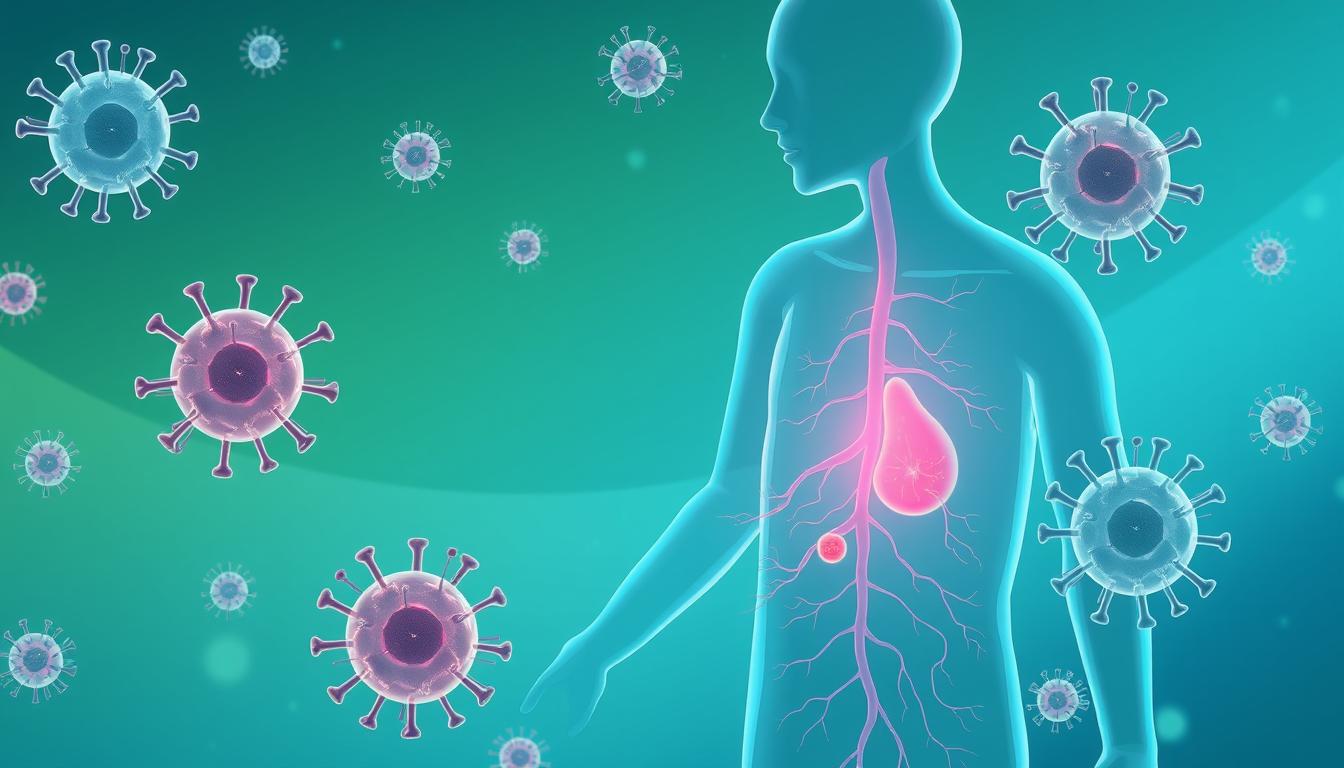
![8 Secrets of longevity: How to Live a Long and Happy Life [Definitive Guide]](https://healthyious.com/wp-content/uploads/2020/02/Secrets-of-longevity-how-to-live-long-life-640x360.jpg)

